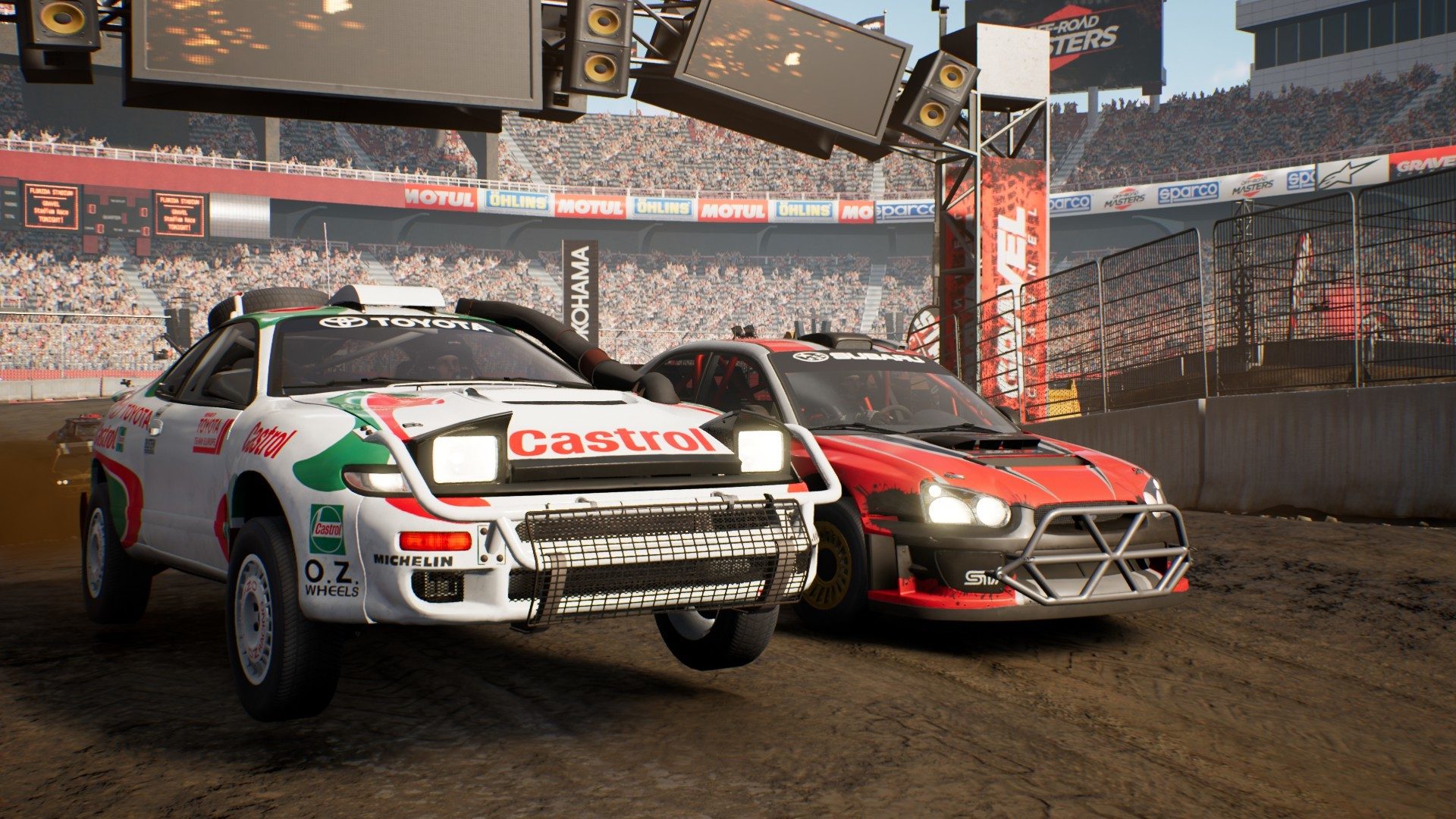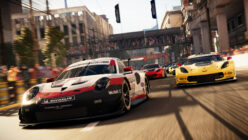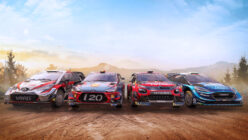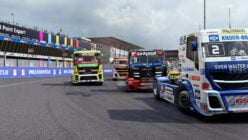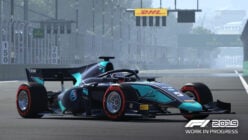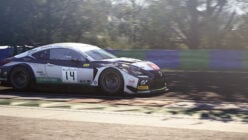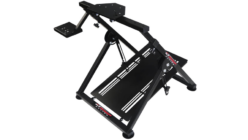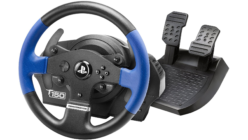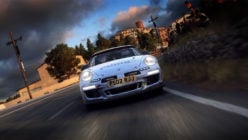When it comes to off-road racing or driving games there’s no shortage. The DiRT series leads the way, but it faces stiff competition from a quickly growing genre. Granted most of the games that attempt to take it on are lesser known. However, some do find success.
So how does Gravel stack up to the rest of the crowd? To find out I purchased Gravel through Steam to give it a go and see where it stands.
Also, since I don’t have a wheel for my PC, I used an Xbox 360 Controller.
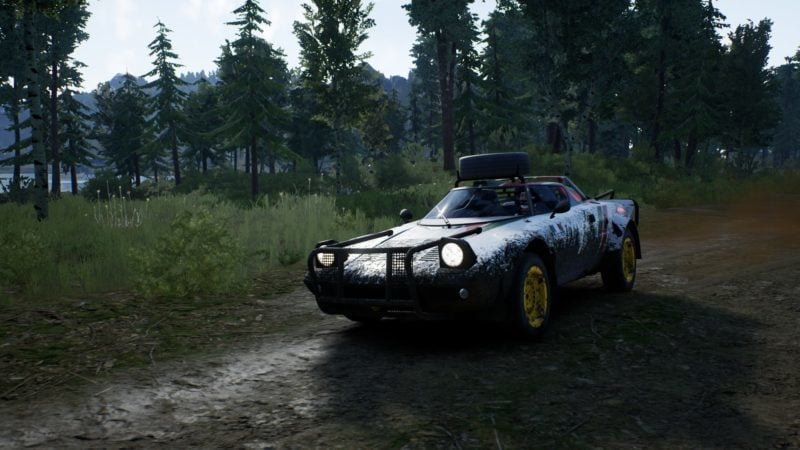
Content and Value For Money –
Let’s get this out of the way up front, Gravel is pricey. At $49.99 it’s closer to an AAA title than something further down the hierarchy. However, does it have enough content to justify the entry price? The short answer is no, but that doesn’t mean it’s completely lost.
The vehicle list is actually quite good and there are a few surprises that pop up. Among the 48 cars, there’s everything from Group B rally monsters to trucks that tackle the Dakar.
The two stand out manufacturers though are Porsche and Toyota.
When EA gave up the goods on its exclusive Porsche license, it seems that the floodgates opened. This means you do get a rally prepped 911 RSR and the famous 959 — although the later comes by way of paid DLC.
The Toyota lineup doesn’t require you to pony up any extra cash. In the opening racing of the game, you even get to experience the Celica GT-Four (ST185) sporting that timeless Castrol livery.
A personal favorite of mine during the gameplay was the Toyota T100 Trophy Truck. Blasting around the terrain in the Ivan “Ironman” Stewart livery is enough to conjure up a bit of nostalgia from the early ’90s release of Super Off Road.
Unfortunately, much of the car list is locked right from the get-go, even in the “Free Play” mode. Not just the cars, but liveries too.
This is a bit frustrating if you want to jump behind the wheel of the Lancia Stratos, but can’t until you accumulate enough “Show Points” to advance your level.
I can understand keeping liveries locked and even locking out vehicles in the career mode until you’ve progressed to a certain point. But in free play modes for any game, all the content should be available up front.
Thankfully, getting Show Points and advancing levels doesn’t take too long. In the first 45 minutes of playing the game, I was already at level 10 with a handful of cars unlocked.
This brings us to the meat and potatoes of the game: the Off-Road Masters mode. This career mode plays out like a reality TV show where you compete in different racing disciplines.
The series are varied and offer a good mix of the four different race type:
- Cross Country is a point-to-point race where you need to reach certain checkpoints.
- Wild Rush is a circuit race that takes place in a wide open area.
- Speed Cross is essentially rallycross, so don’t get it confused with Speedcross from NFS: Payback.
- Stadium Circuit take place in both real and fictional stadiums on tracks that remind me of something you’d see in Motocross
The location variety is nice as well. There’s everything from the beaches of Namibia to the wilds of Alaska. Although, in Forza Horizon style they are more along the lines of interpretations of locale than an actual place on a map.
Weirdly though, there’s a complete lack of any track anywhere in Asia.
One disappointing thing about the locations is the inability to roam around them. While some of the tracks are more open, all of them are very linear with walls and invisible barriers that reset you if you get too far.
Overall, you do get a decent amount of cars, tracks, and disciplines to at least have fun. However, don’t expect the fun to last long. The races are short. If you really put your nose to the grindstone you can complete the entire game in under 10 hours. That’s even with the difficulty of the AI turned up.

Online Features –
Maybe this is a bit different on consoles, but the Steam version of the game is incredibly empty when it comes to finding people to race against.
On several occasions I created a “Quick Match” and the game never found any open lobbies to let me join. So it instead created a lobby with me as the room’s host. I waited on one occasion for over 10 minutes and never had anyone join, despite it being public.
Due to this unfortunate bit of emptiness, I can’t really comment on how well the game performs online.
However, as the host of the room, you do get to control options from assists and whether or not damage is cosmetic or actually affects the vehicles.
Track selection and categories are done by voting from the those who enter the room. However, this is done once people do join the room so I can’t say whether or not everything is unlocked or not.
Since the multiplayer experience was lacking, I did try out another online feature — Weekly Challenges.
During these challenges, the game presents you with a vehicle and track combination where you attempt to beat a given time. During the review period, I was given a Hummer H3 race truck and had to do a Cross Country race in Namibia. Beat the time and I’d be awarded 100,000 Show Points.
Given how easy the rest of the game is, I was surprised when I could only get within two seconds of the 3:08 required time. Looking at the leaderboard though, it is definitely possible to do by more skilled racers.
While certainly fun trying to achieve the time, I don’t think it’s an event that will keep bringing me back to the game. That is unless it turns into a Fozathon-style event where you can get otherwise unobtainable vehicles.
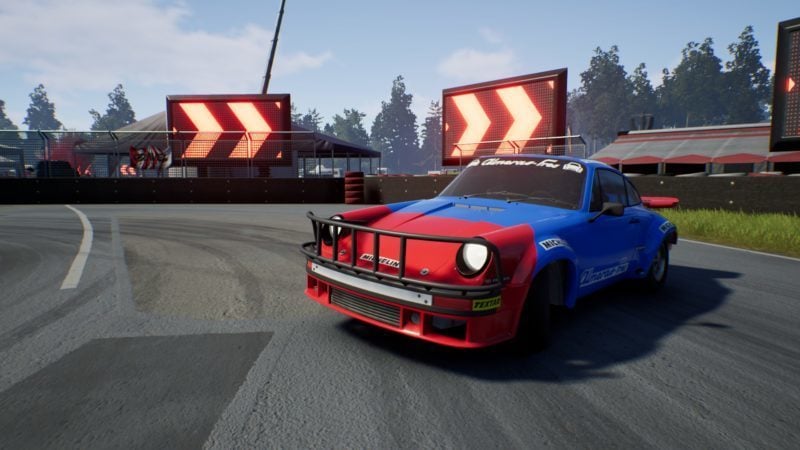
Driving Physics and Handling –
A simulator this is not. However, for an arcade title, it does attempt to give the player some sense of realism. Unfortunately, even that misses the mark.
The biggest fault here is how the vehicles interact with the terrain. There’s almost no difference between mud, dirt, and sand. If you’ve ever had the pleasure of doing any form of off-road driving in varying terrains, you know that all these different surfaces will feel quite different. This should be even more amplified if you plan on going fast.
The vehicles also seem to have superpowers that allow them to stay glued to these surfaces. When entering a tight corner you can go in at full chat, stab the brakes, and somehow the vehicle rounds the bend with some minor tail out action.
If you tried doing that in deep sand, you’d end up on your roof.
Thankfully this changes when you move to ice or tarmac though, with both feeling more true to life. However, even the ice feels a bit exaggerated. The vehicles you run on ice clearly have studded tires, which should dig in but for whatever reason they don’t.
Another issue with the terrain is how obstacles interact with your vehicle. If you’re blasting through a section of track at 120mph and come across a small, unassuming shrub it will knock your vehicle sideways. In a vehicle weighing upwards of 6,000lb, a small bundle of sticks and leaves shouldn’t cause you any issue at all.
This issue also creeps up with small bumps. Hit them just right and you’ll find yourself tumbling end over.
While this would be understandable for a race car with zero suspension travel, in something like the Toyota T100 that ran the Baja 1000, a bump should be the least of its worries.
I’m not sure if these are glitches or were an actual design decision. Either way, it makes racing incredibly annoying.

Graphics –
My system uses a Nvidia GeForce GTX 1070 graphics card, so not a slouch by any means. However, even running the game at its max setting, the graphics are less than stellar.
The biggest complaint is that everything looks rather bland. There’s no vibrance, HDR, or even much light bloom to speak of. If anything it reminds me of early PS3 era graphics, which at the time were amazing. But we’re in 2018 and have games like Gran Turismo Sport which bring out a ton of detail and at times blur the lines between real life and digital.
Thankfully, the game does run well on the highest graphics setting. I didn’t experience any frame rate drops or even any chugging from my system as it attempted to render the terrain.
Speaking of the terrain, that’s another miss on the part of the graphics. Much of it feels empty or filled with a bunch of copy/paste trees. I know off-road racing typically takes place in remote areas, but looking at the same trees for five laps isn’t terribly interesting.
Even the vehicles seem lacking in detail. Sure you can see the suspension movement, but that’s about it. The mudflaps don’t move about in the wind on some of the cars. Go off a big jump and part of your vehicle will clip through the terrain.
Also, the liveries don’t have the detail that you’d expect. When comparing the in-game liveries of the Castrol Celica GT-Four to the real thing, there’s a bunch of details missing. If it was simply an interpretation of the livery, I could forgive it, but it’s clear that the folks at Milestone got permission to use the real deal.
The lack of attention to detail also comes when the vehicles get dirty. It’s almost like the dirt has an on/off switch and its either there or it isn’t. With other games, I expect pre-rendered dirt to crop up on the vehicles but it typically fades in. With Gravel, if you hit even a little bit of mud the amount of dirt goes from zero to 100 real quick. Then if you happen to splash through some water, the dirt suddenly vanishes.
I don’t expect true to life dirt on the vehicles, but fading in and out would certainly be a better approach than just all-in.
Like the cleanliness of the vehicle, the damage also seems to have a switch. Tap another car and your fender is instantly crunched in the same way that would happen if you tapped the wall. In an era of gaming where damage is a big deal, it’s unfortunate that Milestone took such a drastic approach to damage.
My final complaint about the cars are the lights. If you’ve ever seen a rally car on a night stage you know just how bright those lights are. But in Gravel, every vehicle seems to have lighting technology from 1985. There’s no sense of LED or HID lights, even on vehicles that come equipped with them. Instead, all you get is a dull, off-white and yellowing light you’d expect from a set of bargain bulbs at the local AutoZone.
However, at least the game doesn’t fall into the trap of making the lights too dim. During the night races, you can at least see where you’re going.
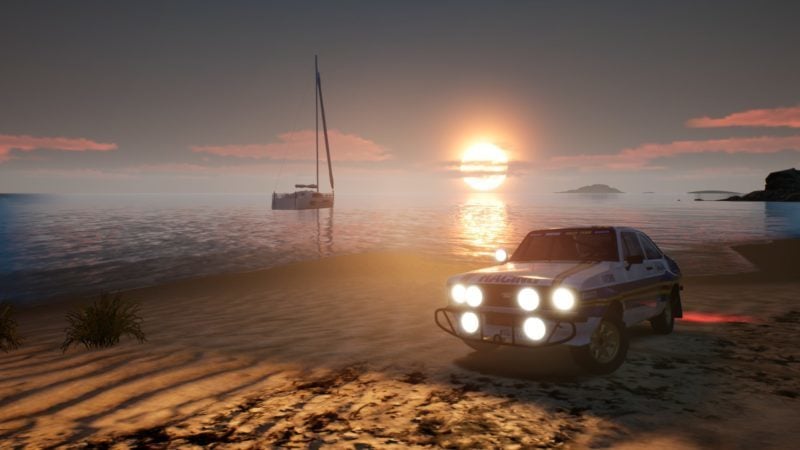
Sound –
The single worst part of the sound design by a country mile is the announcer. I’ve never wanted an in-game “character” to shut up more than the announcer in Gravel.
What makes him so bad is the everything is in a monotone voice while trying to act like a “bro”. It’s like Milestone turned up at a truck meet, found the guy that had the largest Monster Energy drink decals on his rig, and asked him to read some lines without any emotion.
Thankfully, you only have to deal with him at the start and end of the race.
The best part though is that you can actually mute him in the options menu. By doing that it made the game instantly more enjoyable.
Another shortcoming is the music. It’s a mix of uninspiring electronica rock music. The first thing that springs to mind when hearing it is the early Forza games with Junkie XL — only on a shoestring budget.
Despite the shortcomings with the announcer and the music, the vehicles do sound fairly good. I didn’t get a chance to try every vehicle available. But, the 20 or so I did try all had unique sounds based on the engines.
The big roaring V8s from the trophy trucks differ greatly from the super boosted four-pots of the Group B cars. You also get the pops and bangs from the exhaust during gear changes and the hiss of the blow-off valves on turbo cars.
There is a bit of a drawback though: unless you like racing using the chase cam, don’t expect to hear much. If you prefer the cockpit view or bumper cam, the engine on most of the cars is barely noticeable.
You do get the clanking of rocks bouncing off the car while in cockpit view however, which is a nice touch.
Having only ever listened to YouTube videos of most of the vehicles in the game, it’s hard for me to say how true to life they are. But even if they aren’t, they do sound pretty good.
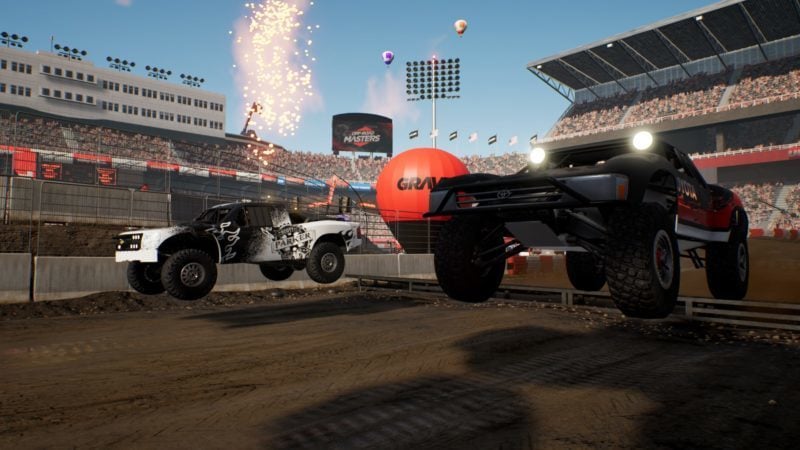
Verdict
Despite all the shortcomings of the game, I did actually have fun with it. Sure the weird terrain interactions were annoying and I wanted to reach through the screen and punch the announcer. But overall the racing was enjoyable enough.
The best thing I can compare it to is MotorStorm on the PS3 with a mix of Sega Rally Revo from the Xbox 360.
However, I can’t recommend the game at its price point. At $49.99 the game is too short and has too many issues to justify its price tag. Once it goes on sale though, say for around $19.99 it’s definitely worth picking up.
In the meantime, if you want a solid off-road racing game, stick to either DiRT 4 or DiRT Rally. While neither have the variety offered in Gravel, they are both better games with more polish.
If trophy truck racing is more your thing though, I’d suggest Baja Edge of Control HD. It’s cheaper and offers some fairly solid Baja style racing.
Finally, if you want to do some proper off-roading there’s always Spintires: Mudrunner or Off-Road Drive.
Gravel
Learn more about how our rating system works.
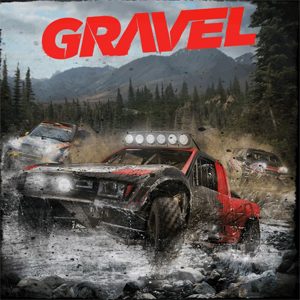
See more articles on Review.
